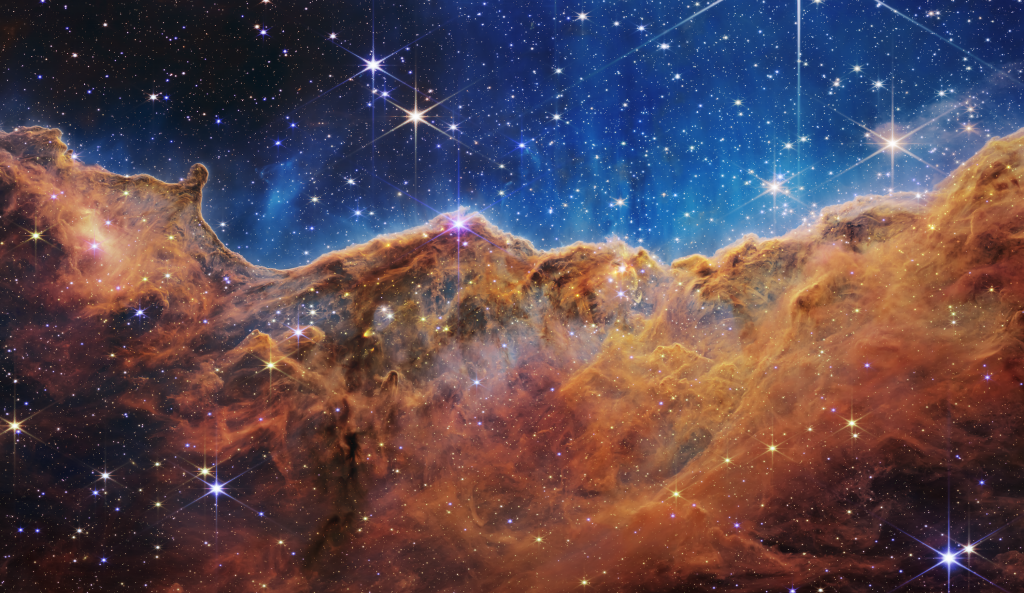- NASA released the first batch of images and data captured by the James Webb Space Telescope on Tuesday.
- An active star formation, an exoplanet, and the deepest image of the universe ever taken, were among the images.
- The telescope is stationed in a gravitationally stable orbit, nearly 1 million miles from Earth.
NASA debuted its first batch of full-color images from the James Webb Space Telescope, the biggest and most powerful telescope that's been sent into space, on Tuesday. The long-awaited images — taken with JWST's 21-foot (6.5-meter) diameter mirror — reveal the deepest, most remote stretches of the universe ever seen.
"Every image is a new discovery and each will give humanity a view of the universe that we've never seen before," Bill Nelson, NASA's administrator, told an audience of engineers and scientists who contributed to the telescope's development, at Goddard Space Flight Center on Tuesday. "You're going to see the formation of stars, you're going to see devouring black holes. It's going to reveal all of this," Nelson said.
Over the weekend, JWST's team started its first year of normal science operations. "That is now in full swing," Bill Ochs, JWST's project manager at Goddard said Tuesday. "As the old saying goes, it takes a village. With Webb, it actually took a town of about 20,000 people, over a period of 20-plus years, across 29 US states, and 14 countries."
"It took us about 25 years to get here, since 1995. And we have at least 25 to go — I hope," John Mather, Webb senior project scientist, who has worked on the project since 1995, said after the image reveal on Tuesday.
Often described as the successor to the Hubble Space Telescope, Webb launched on December 25, 2021, after more than two decades of development. Since that time, the $10 billion telescope has traveled more than 1 million miles from Earth and is now stationed in a gravitationally stable orbit, collecting infrared light. By gathering infrared light, which is invisible to the human eye, Webb is able to cut through cosmic dust and see far into the past, to the first 400 million years after the Big Bang.
"We're going back to about 13 and a half billion years," Nelson said in a White House briefing Monday. "Since we know the universe is 13.8 billion years old, we're going back almost to the beginning."
Here are the first cosmic views the space agency shared from its powerful new eye in the sky:
Carina Nebula
One of the new images shared Tuesday was of the Carina Nebula, an assemblage of gas and young stars 7,600 light-years away and four times as large as the Orion Nebula. It's a vast star-forming region and home to young, extremely massive stars, including Eta Carinae — a volatile system containing two massive stars that closely orbit each other.
Southern Ring Nebula
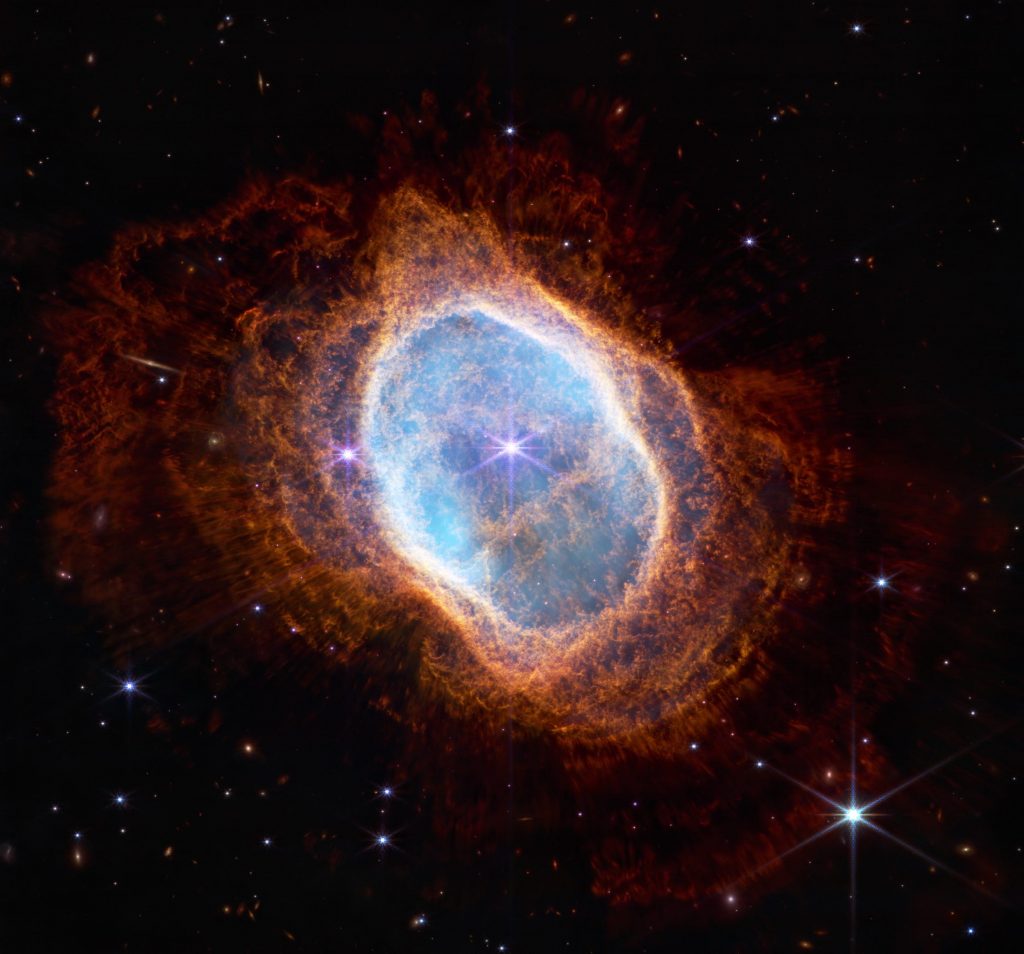
NASA also shared images of the Southern Ring Nebula, or "Eight-Burst" nebula, which is 2,000 light-years away from Earth. This large planetary nebula, which is nearly half a light-year in diameter, includes an expanding cloud of gas around a dying star. In the image, Webb's infrared haze revealed unprecedented views of the two gravitationally bound stars which spawned the nebula.
Stephan's Quintet
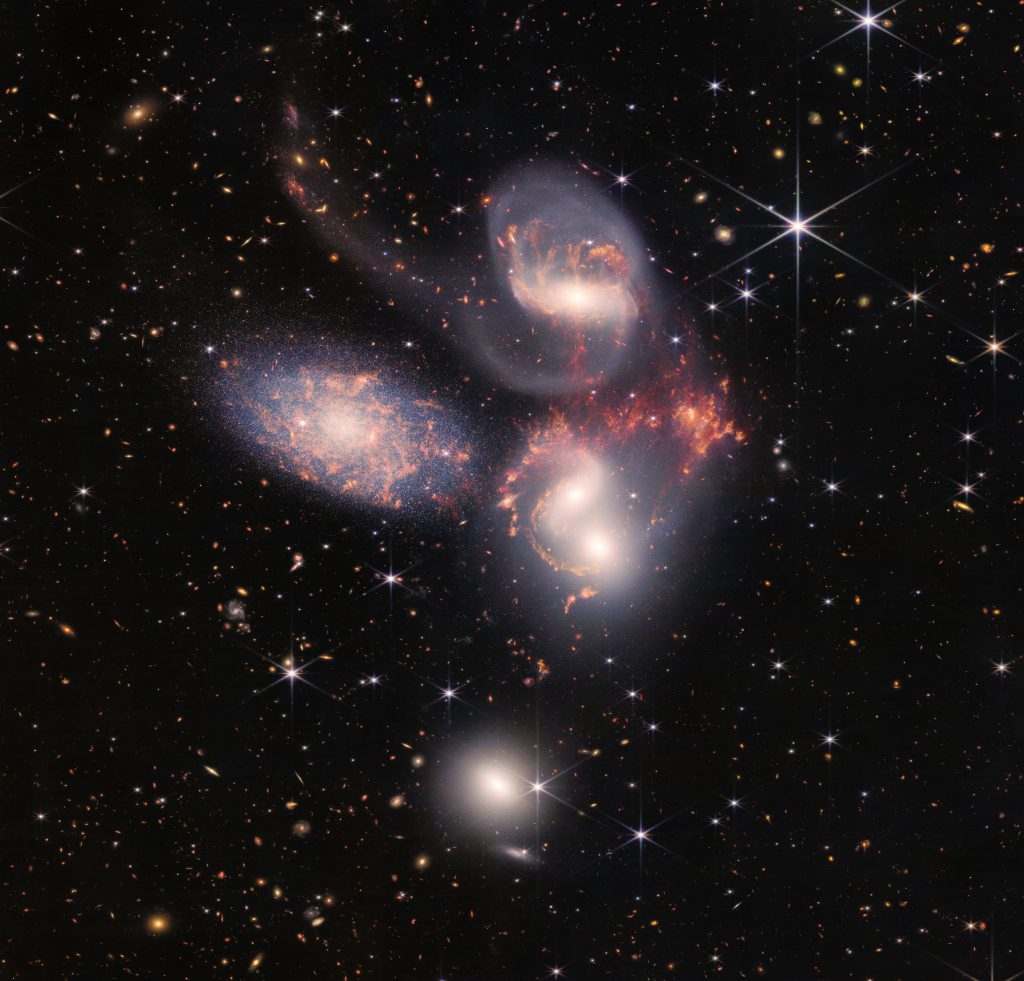
Webb also imaged Stephan's Quintet, a collection of five galaxies 290 million light-years from Earth in the constellation Pegasus. Four of the five galaxies are gravitationally interacting in a slow-motion merger, which data scientist Giovanna Giardino called "a sort of cosmic dance driven by the gravitational force" on Tuesday. The fifth galaxy is much closer to Earth, about 40 million light-years away.
Spectrum of WASP 96-b
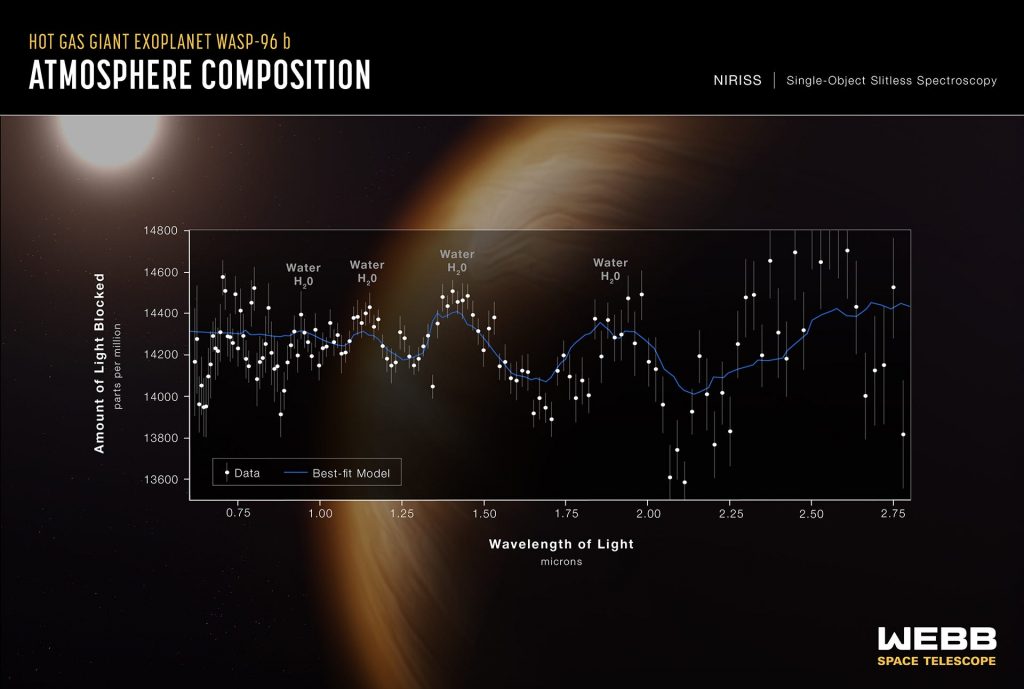
Scientists are also leveraging Webb's capabilities to peer into the atmospheres of planets outside the solar system, called exoplanets.
On Tuesday, scientists released the spectrum of WASP 96-b — an unusual, cloudless planet 1,150 light-years away. They used a tool called spectroscopy, which provides important information on the chemical makeup of a planet's atmosphere coded in light. It allows astronomers to identify the fingerprints of small molecules, such as carbon dioxide and water, and offers meaningful clues about the habitability of other worlds.
"This is exciting because it covers infrared wavelengths of light that we have not had access to before," Knicole Colón, an exoplanet scientist at NASA, said on Tuesday. The data shows the signature of water in this exoplanet, as well as evidence of clouds and haze, Colón said.
SMACS 0723
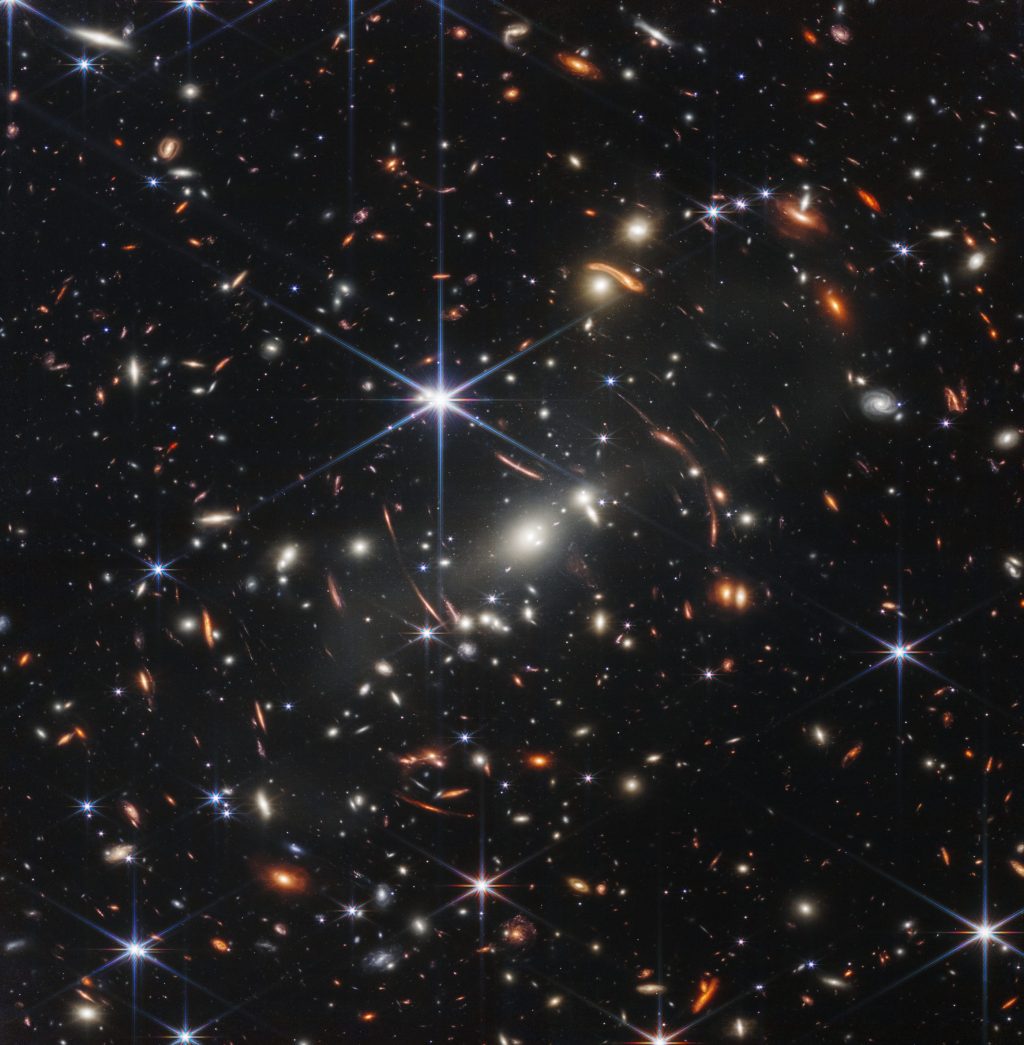
In addition to the new images released Tuesday, President Biden unveiled the first full-color image from JWST on Monday.
In it, Webb pointed its powerful infrared camera to SMACS 0723, a massive group of galaxy clusters that act as a magnifying glass for the objects behind them. The new picture is a "deep field" image — a long-exposure observation of a region of the sky, which allows the telescope to capture the light of extremely faint, distant objects. The streaks of light are galaxies stretched out by the powerful gravitational pull of SMACS 0723, a phenomenon known as gravitational lensing. This created JWST's first deep-field view of incredibly old and distant, faint galaxies — the deepest infrared view of the cosmos to date. If you held a grain of sand at arm's length, that would represent the speck of universe you see in this image, Nelson told Biden in the Monday briefing.
"There's just a sharpness and a clarity we've never had," Jane Rigby, JWST's operations project scientist, said during Tuesday's reveal. She added the most distant galaxies in the photo are more than 13 billion years old, and scientists know what those galaxies are made of — oxygen, hydrogen, and neon.
What's more, the telescope is just starting its mission. "We're only beginning to understand what Webb can and will do," Nelson, told reporters at a news briefing last week.
"It may answer some questions that we have: Where do we come from? What more is out there? Who are we? And, of course, it's going to answer some questions that we don't even know what the questions are," Nelson said.
